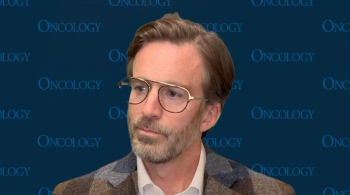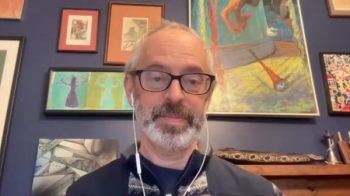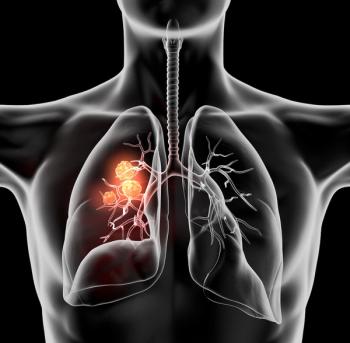
Everolimus/Lanreotide Prolongs PFS in Unresectable/Recurrent GEP-NETs
Everolimus plus lanreotide elicited a PFS of 29.7 months compared with 11.5 months from everolimus monotherapy in patients with gastroenteropancreatic neuroendocrine tumors.
Everolimus (Afinitor) plus lanreotide (Somatuline) demonstrated a significant improvement in progression-free survival (PFS) compared with everolimus monotherapy, as well as an acceptable safety profile in the first-line treatment of patients with unresectable or recurrent gastroenteropancreatic neuroendocrine tumors, according to findings from the phase 3 STARTER-NET trial (jRCT1031200023) presented at a press briefing prior to the
At the interim analysis conducted in June 2024, the median PFS was 29.7 months (95% CI, 20.5-not evaluable [NE]) in the everolimus plus lanreotide group vs 11.5 months (95% CI, 9.0-19.8) in the everolimus monotherapy group. The stratified HR was 0.38 (99.91% CI, 0.15-0.96; one-sided P = .00017).
The median overall survival (OS) analysis conducted in November 2024 was NE in both groups. The 1-year survival in the everolimus plus lanreotide group was 96.2% (range, 88.8%-98.8%) in the everolimus plus lanreotide group and 97.0% (range, 88.4%-99.2%) in the everolimus group. The HR for OS was 0.74 (95% CI, 0.25-2.24). A total of 13 events were observed; 11 were deaths from the primary disease, 1 was death from another disease, and 1 was unknown.
The objective response rate (ORR) was 23.0% (95% CI, 14.6%-33.3%) in the everolimus plus lanreotide group (n = 87) and 8.3% (95% CI, 3.4%-16.4%) in the everolimus group (P = .011). Twenty-three percent and 8.3% of patients, respectively, experienced partial responses (PRs), 69.0% and 76.2% had stable disease (SD), 2.3% and 10.7% had progressive disease, and 5.7% and 4.8% were NE.
The disease control rate (DCR) was 92.0% (95% CI, 84.1%-96.7%) and 84.5% (95% CI, 75.0%-91.5%), respectively (P = .16).
“The combination of lanreotide and everolimus significantly prolonged PFS in poor prognostic population of [grade 1 or 2 gastroenteropancreatic neuroendocrine tumors], with a manageable toxicity,” Susumu Hijioka, MD, from the Department of Hepatobiliary and Pancreatic Oncology at the National Cancer Center, wrote in the presentation. “Everolimus plus lanreotide has the potential to become a new standard first-line treatment for patients with unresectable or recurrent [gastroenteropancreatic neuroendocrine tumors] of poor prognostic population.”
The primary trial end point was PFS. Secondary end points include OS, DCR, and safety.
A total of 250 patients were randomly assigned, in a 1:1 ratio, to either the everolimus at 10 mg/day plus lanreotide at 120 mg every 28 days or the everolimus monotherapy group was given everolimus at 10 mg/day.
Patients were required to be 20 years or older and have histologically proven grade 1 or 2 gastroenteropancreatic neuroendocrine tumors that are unresectable metastatic, or recurrent. Additional criteria include an ECOG performance status of 0 to 2, no prior history of treatment for metastatic or recurrent disease, and a Ki-67 index of 5% to 20% or a Ki-67 index of less than 5% with diffuse liver metastases.
Per a subgroup analysis for PFS, the first primary site of disease was the pancreas (n = 118) and the gastrointestinal tract (n = 50). The second primary site of disease was the pancreas (n = 118); the duodenum, jejunum, ileum, cecum, or appendix (n = 15); and the stomach, colon, or rectum (n = 35).
Regarding safety, adverse events (AEs) of grade 3 or higher occurred in 35.6% of patients in the everolimus and lanreotide group and 14.9% of patients in the everolimus group. The most common AEs of any grade were oral mucositis (62.1% and 67.8%, respectively), hyperglycemia (62.1% and 33.3%), and diarrhea (36.8% and 26.4%). The most common AEs of grade 3 or higher were hyperglycemia (9.1% and 1.1%), oral mucositis (8.0% and 4.6%), and fatigue (5.7% and 1.1%).
Hijioka noted that the trial was terminated early due to efficacy.
“While lanreotide and everolimus have each previously demonstrated the ability to extend PFS in patients with gastroenteropancreatic neuroendocrine tumors, combination treatment of lanreotide with everolimus was previously unstudied. Establishing this new treatment option benefits patients by expanding their therapeutic choices and potentially improving their prognosis and quality of life,” Laura Vater, MD, MPH, assistant professor of clinical medicine at Indiana University Simon Cancer Center, stated in a press release on the findings.2
Reference
- Susumu H, Honma Y, Machida N, et al. A phase III study of combination therapy with everolimus plus lanreotide versus everolimus monotherapy for unresectable or recurrent gastroenteropancreatic neuroendocrine tumor (JCOG1901, STARTER-NET). J Clin Oncol. 2025;43(suppl 4):652. doi:10.1200/JCO.2025.43.4_suppl.652
- Combination of everolimus and lanreotide investigated in patients with gastroenteropancreatic neuroendocrine tumors. News release. ASCO. Accessed January 21, 2025. https://shorturl.at/RlfJR
Newsletter
Stay up to date on recent advances in the multidisciplinary approach to cancer.



















































































